Philippe Briand a renowned international French architect of the London-based firm Vitruvius Yachts. He conceives the look, feel and function of the some of the world’s largest private yachts, appropriately dubbed “superyachts”. His latest challenge, however, took place on land: he was recently engaged to design the Blue Pavilion, a clubhouse for THE PAVILIA BAY residential complex on Hong Kong’s waterfront.
To give the residents a sense of helming a superyacht on a voyage at the shorefront, Briand was a natural choice for the design, but as his first building project, the Blue Pavilion presented him with a set of new challenges.

Larger than any yacht he has designed and subject to a slew of regulations beyond the scope of naval architecture, Briand nevertheless found the work just as complex and restrictive as the numerous, interrelated considerations required for the creation of a superyacht. The essence of his response to this challenge lies in the materiality of the building’s façade, finish surfaces and whimsical details.
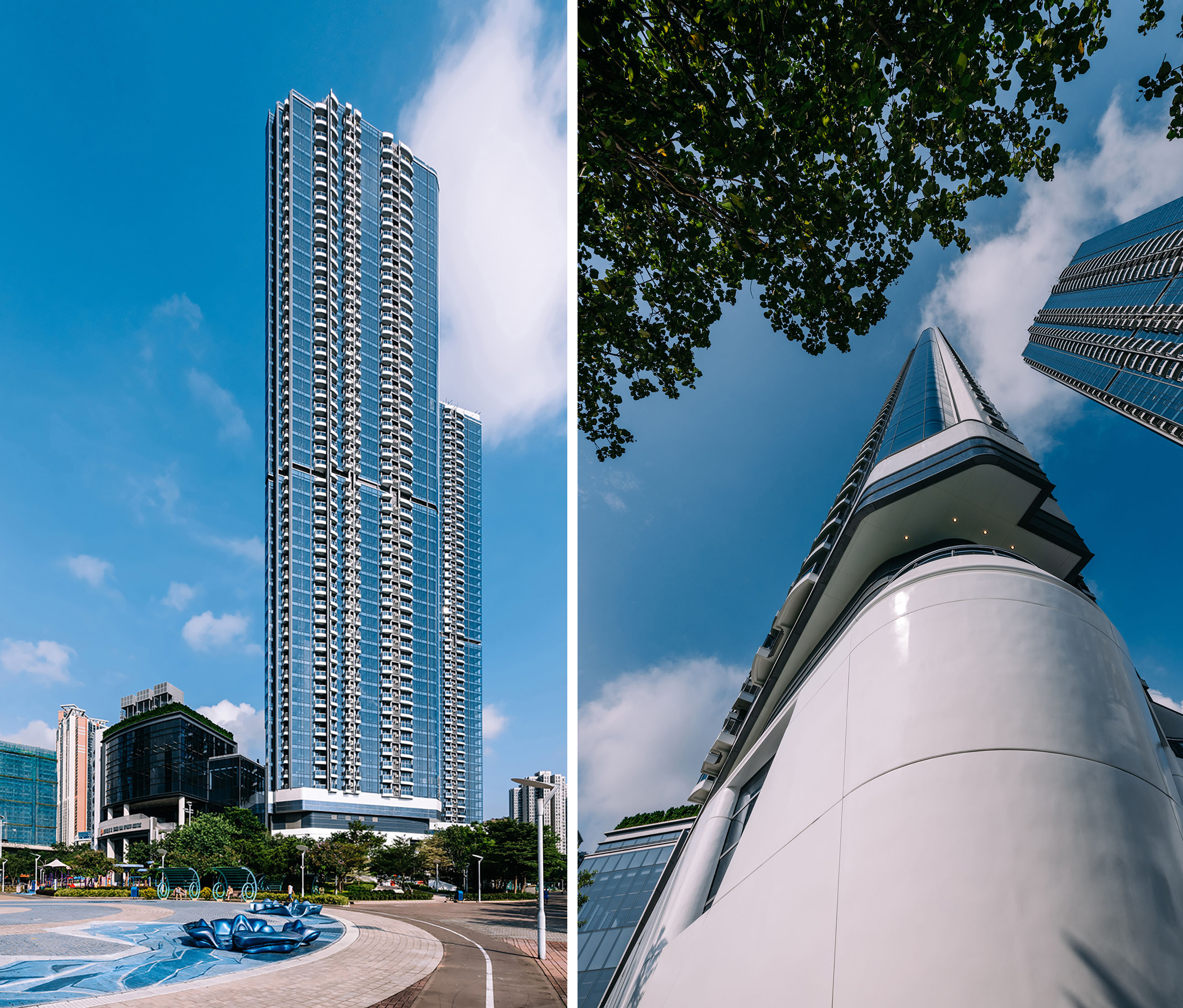
“From the exterior, THE PAVILIA BAY echoes many characteristics of a superyacht,” Briand said, “the two towers as the two masts, the front of the podium facing the sea and the bows.” Taking advantage of THE PAVILIA BAY’s formal composition, as well as its site on Hong Kong’s Rambler Channel, Briand’s first major design move was to clad the exterior of the Blue Pavilion with the same type of steel plates used on ocean-going vessels.
Constructed from more than 650 plates and weighing more than 75 tons in total, the clubhouse façade was crafted by artisan manufacturers using high quality steel fabrication techniques. Each plate was individually cut, shaped, welded, polished and painted in a process similar to constructing a yacht in a shipyard. They give the Blue Pavilion’s curving façade an unmistakably nautical ambiance.
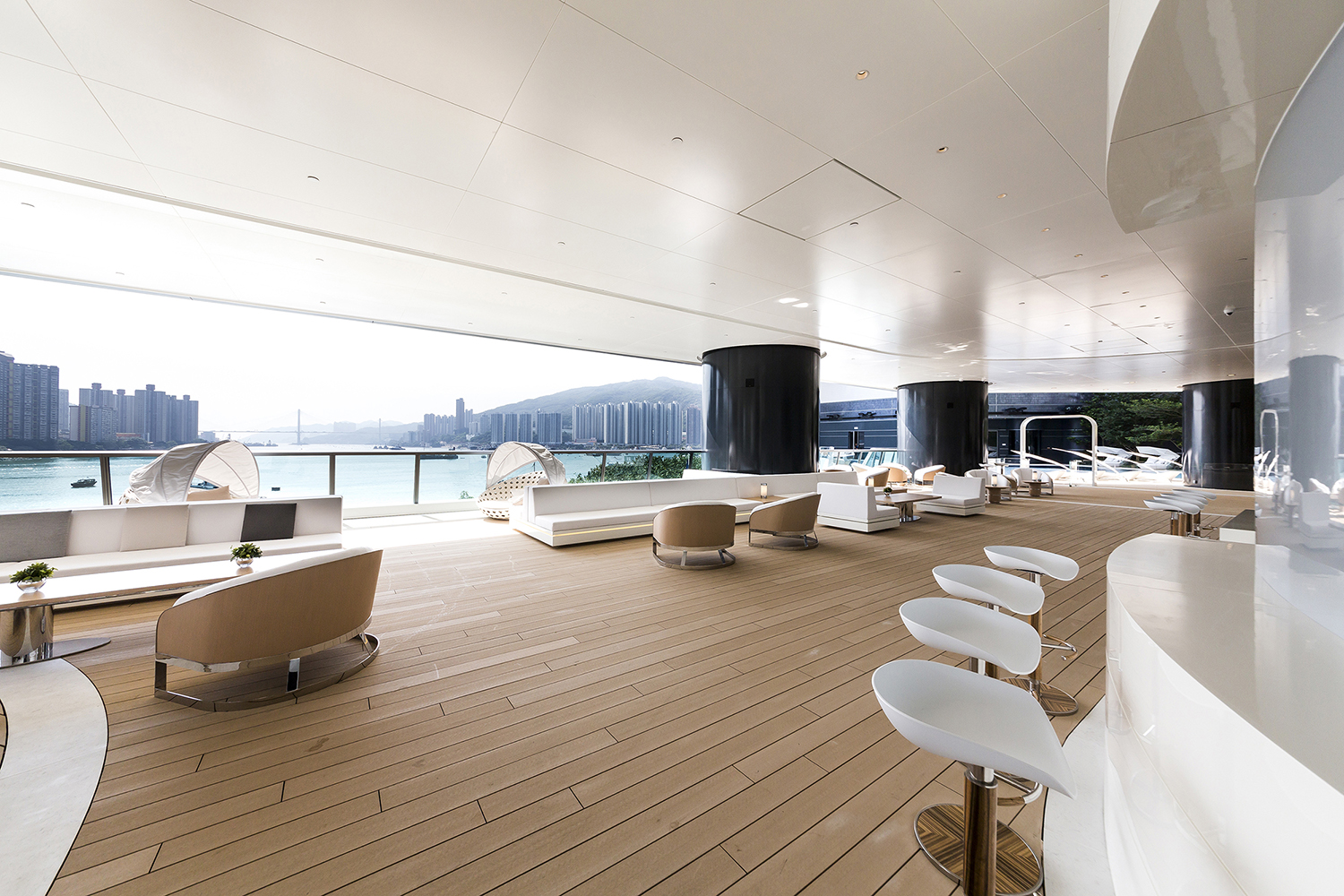
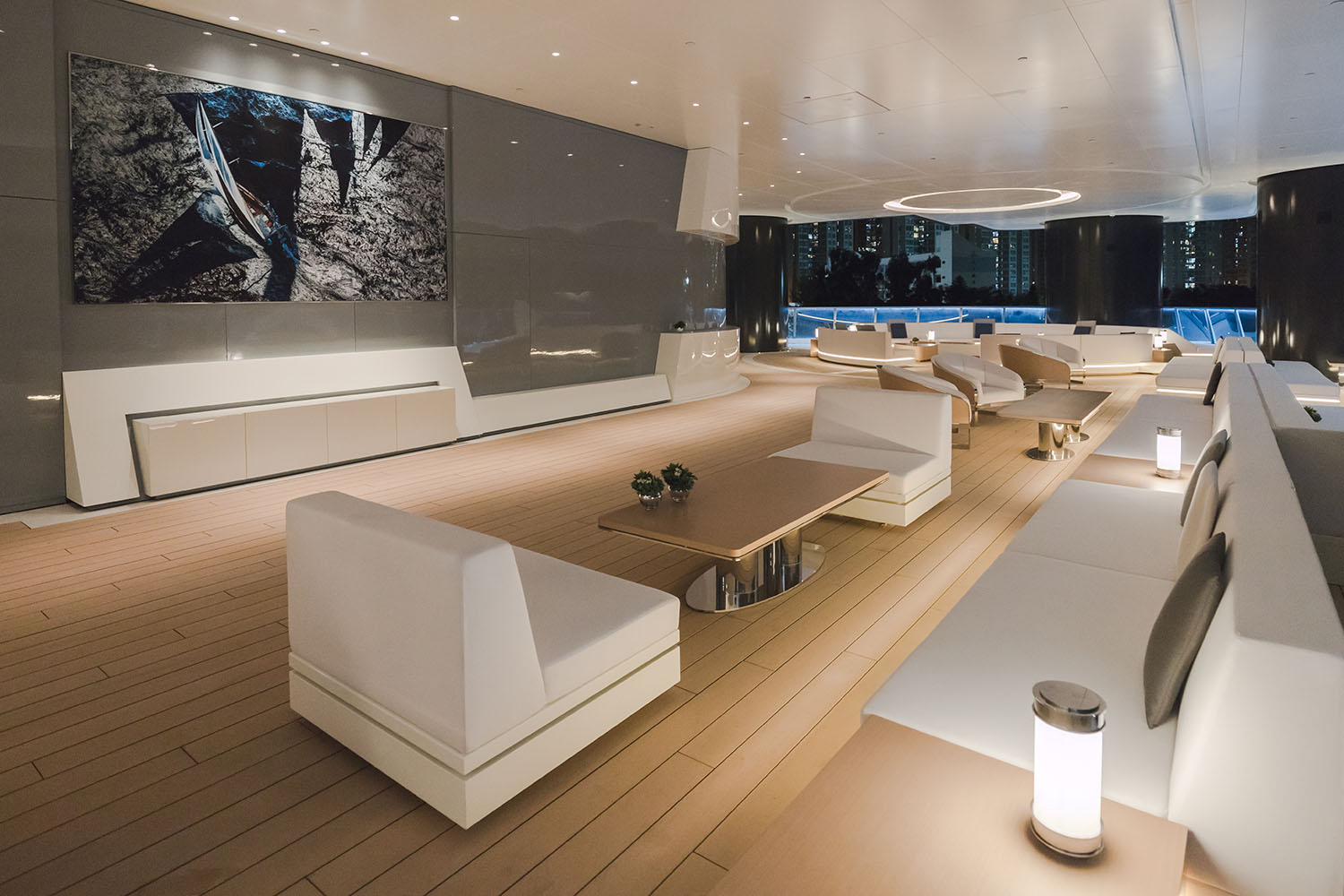
Briand designed the clubhouse’s interior spaces to mirror the curves on the exterior, featuring the same spatial economy and lack of sharp edges one would see on board a yacht. The appearance of these curves offers a clue to their detailing: nearly every finish surface shines with the gloss of highly-polished sealant, a staple in marine interiors, where water resistance is paramount.
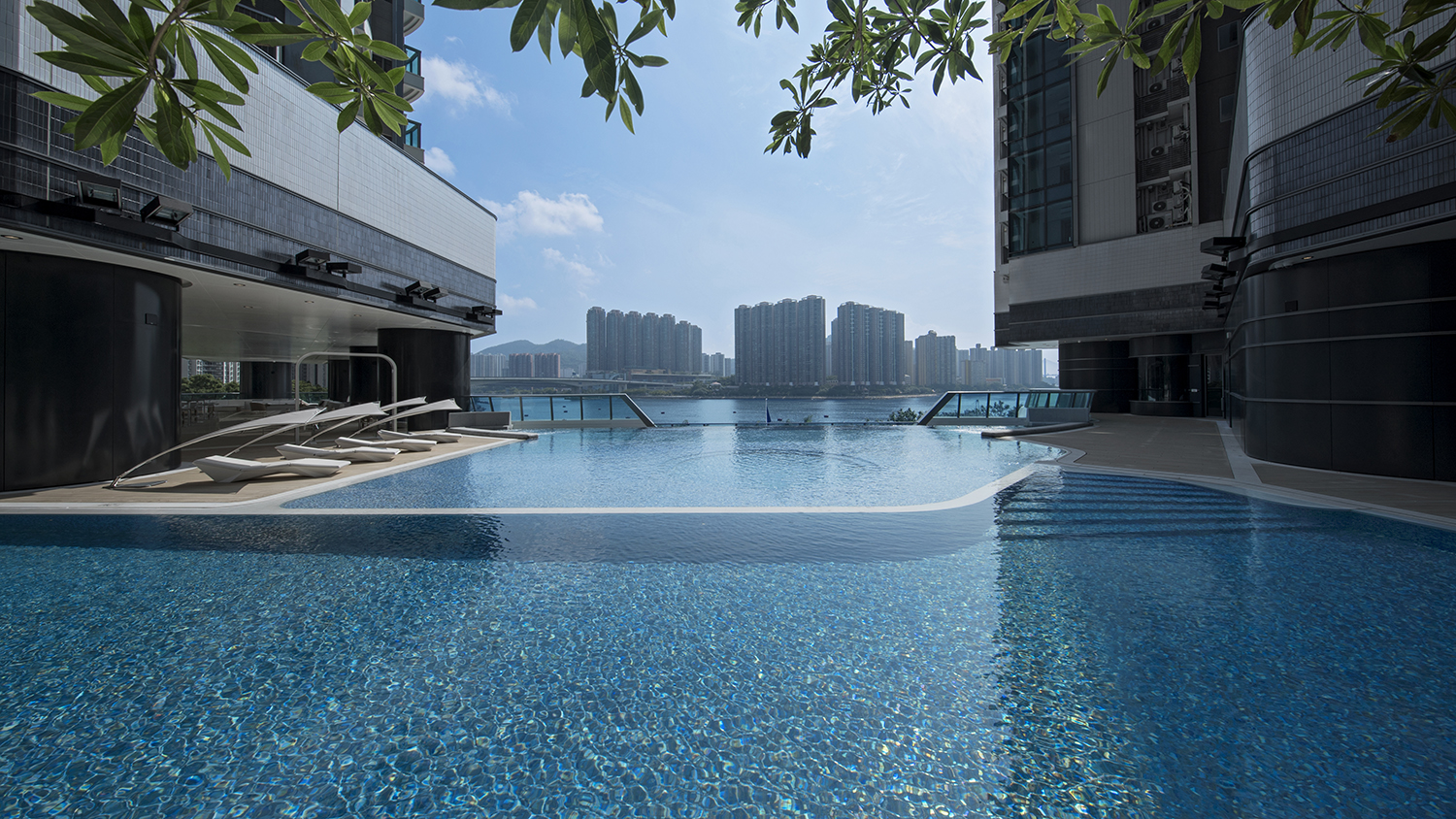
The surface appearance of these materials is more than a purely aesthetic concern. The top floor of the clubhouse, which Briand likens to the top deck of a yacht, is comprised of a series of free-flowing, indoor-outdoor spaces surrounding an infinity pool that overlooks the sea.
“The technical elements are always established on the main deck,” he said. “Here you’ll find water, carbon fiber, flooring and tinted glass.” In keeping with this environment, the flooring on this level is composite decking made to resemble teak. Frequently used on yacht decks, it is slip-resistant in both wet and dry conditions, and was custom shaped for use throughout the clubhouse.
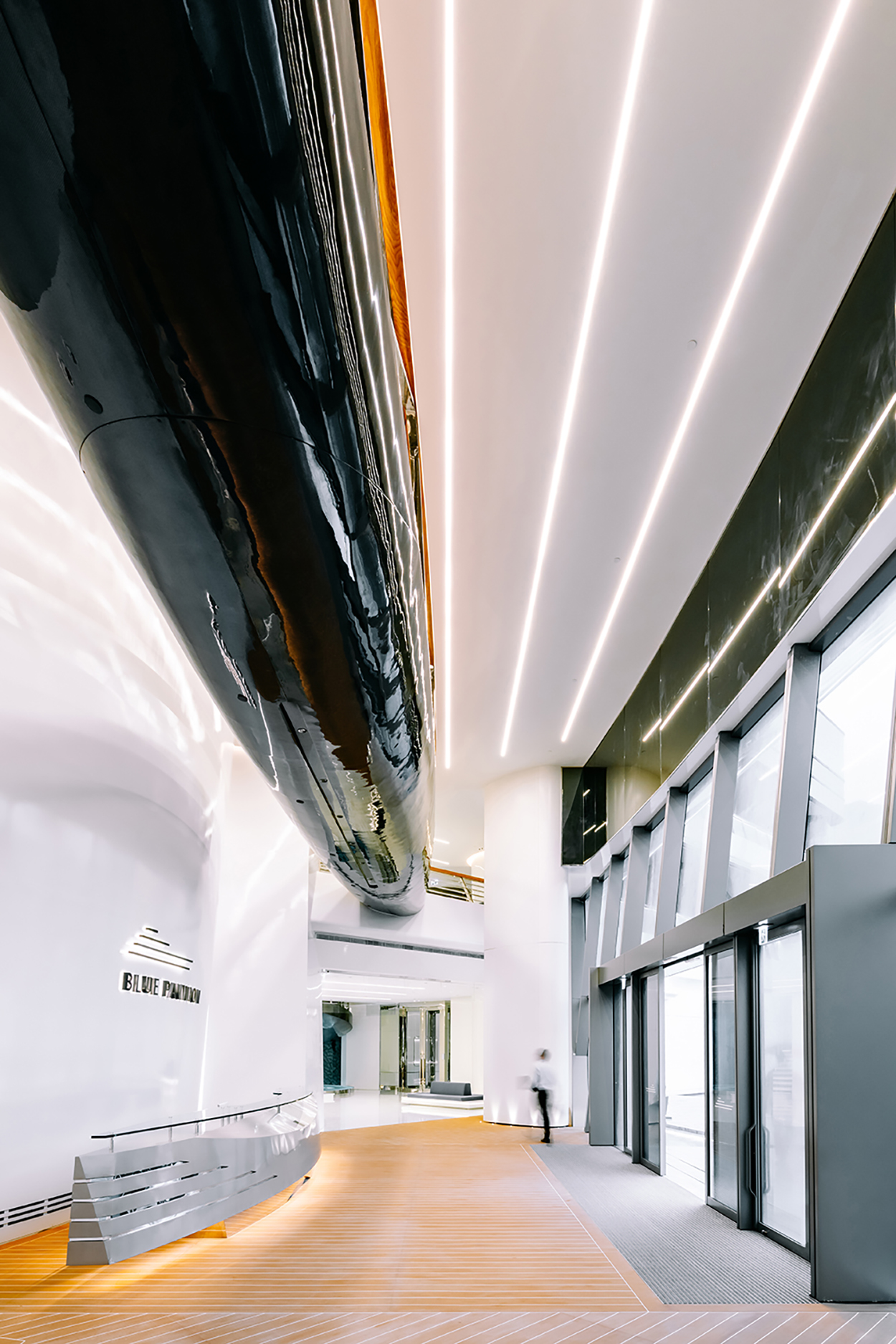
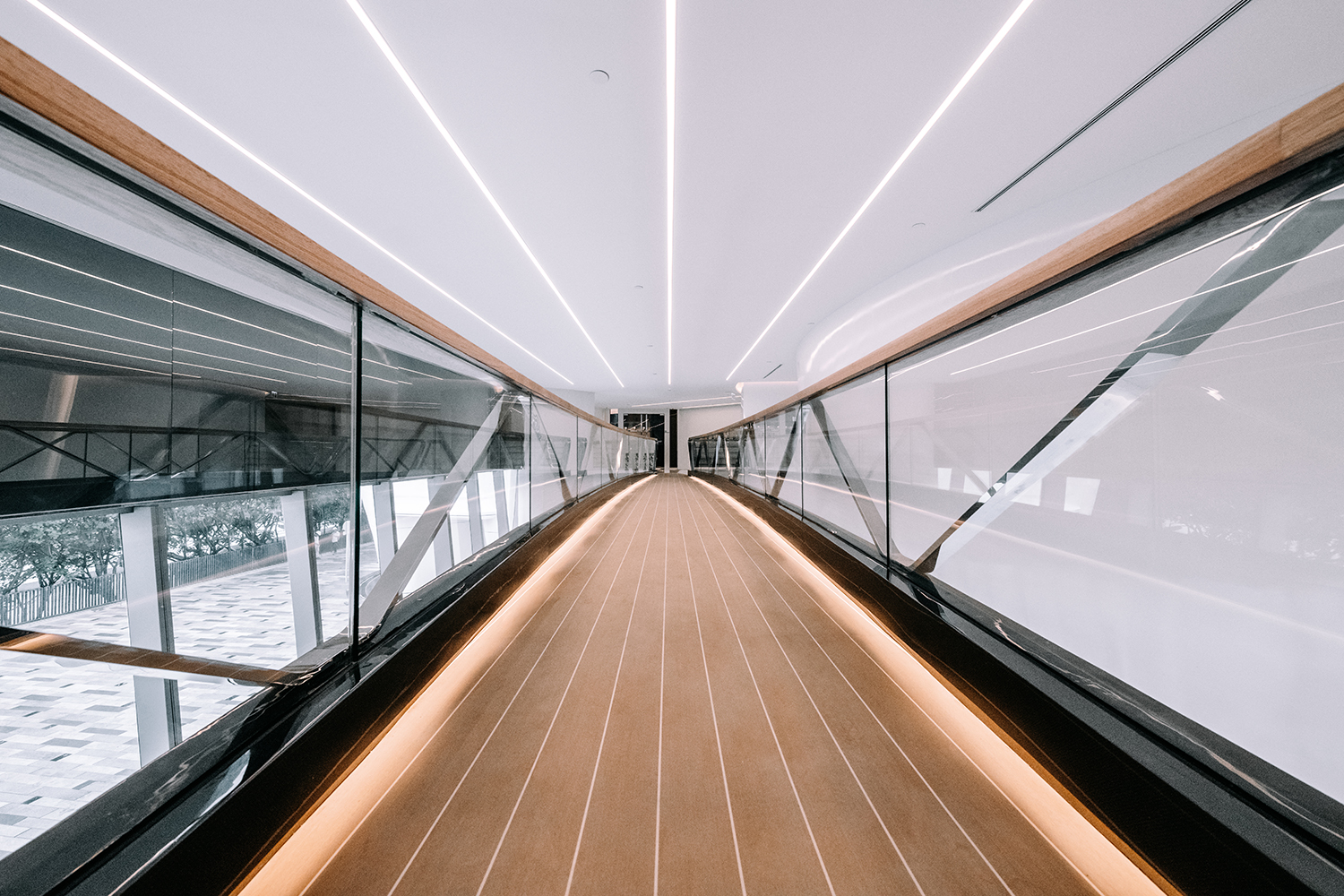
As any seasoned designer of either boats or buildings would understand, Briand knew the Blue Pavilion would benefit from a formal and material accent piece. “The main feature one sees above the entrance lobby is a bridge, designed just like a boat,” he said. “We gave the bridge the shape of a hull. It is made out of carbon fiber, with the same technologies that are used to build racing boats.”
Realized through precise, custom-crafted iterations of molding, resin infusion and casting, the use of carbon fiber — both on the bridge and an exterior flagpole — stands out in this project. Rarely used in residential buildings, carbon fiber is known for possessing a combination of high strength and low weight, making it a fundamental material in maritime design. With a manufacturing process taking longer than a year and a half, it’s used here to bestow the Blue Pavilion with a distinct touch of sea-faring aesthetics.

Briand noted that “water surrounds the vessel,” referring to the concept of the clubhouse taking on the role of a yacht. This may seem straightforward for a structure sited on a coastline, but his metaphor is actually denoting one of the many charming maritime details he included in the Blue Pavilion’s design: the clubhouse’s front entrance is separated from land by a small, shallow pool, which visitors must use a bridge to cross.
Ringed by decorative mooring bollards, the entrance pool is illuminated at night from within, using the same type of underwater lights found on a yacht’s hull. Elsewhere in the Blue Pavilion, shower stalls evoke a ship’s funnel, while boating regalia abounds throughout. Even exterior columns on the Pavilion Deck are wrapped in the same curved manner as a yacht’s mechanical equipment when it pierces the main deck.

Just like one of Briand’s yacht designs, the Blue Pavilion benefits from its creator’s understanding of scale, proportion and harmony. However, the sensibility that helped Briand bridge the gap between water and land the most is a fluency with materials.
The building’s steel plate façade, abundance of water-resistant surfaces and delightful detailing successfully imparts the same sense of excitement, adventure and possibility as a voyage on the high seas.
For information on Philippe Briand’s clubhouse and the larger PAVILIA BAY development, visit THE PAVILIA BAY website.









